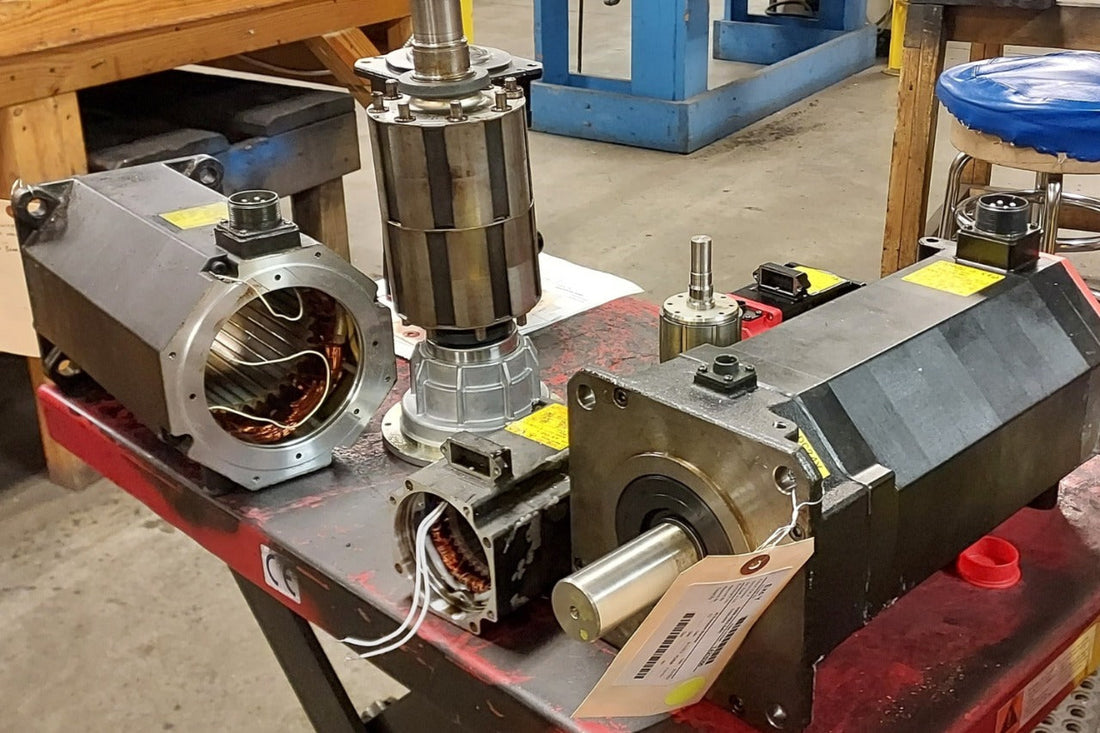
FANUC Servo Motor Brake Repair for Release Failures: Diagnosing the Root Cause
Jitendra PatiIn modern automation systems, FANUC servo motors play a vital role in achieving accurate motion control and maintaining machine stability. One critical part of this system is the brake assembly, which locks the motor shaft when power is removed. This prevents unwanted movement, protects the operator, and ensures process accuracy during stops.
However, when the brake fails to release, production can halt instantly. Operators often notice grinding noises, jerky motion, or the axis refusing to move entirely. These signs indicate a deeper mechanical or electrical issue that requires expert FANUC servo motor brake repair in Canada. Understanding how to identify and resolve such brake release failures can save both time and costly downtime.
Common Signs of a Brake Release Failure
A brake release failure doesn’t always appear suddenly; it often develops gradually. You might notice slight resistance when jogging the axis, intermittent motor alarms, or slower response times. In some cases, the motor shaft feels stiff even when the brake release voltage is applied. These early warnings shouldn’t be ignored.
Ignoring small brake issues can lead to permanent rotor damage or excessive wear on the brake disc. If left unattended, you might even face a full mechanical lockup where the motor becomes immovable. Regular inspection and timely FANUC servo motor brake repair in Canada can prevent such extreme breakdowns and ensure continuous machine performance.
Digging Deeper: Root Causes Behind Brake Release Failures
Brake release failures often result from multiple interconnected issues rather than a single cause. Here are the most frequent culprits found during professional repair and diagnostic processes:
· Worn or Contaminated Brake Pads: Dust, oil, or coolant can infiltrate the brake unit, reducing friction and making release difficult.
· Weak or Broken Springs: Over time, the internal springs lose tension or break, causing the brake not to disengage properly.
· Voltage Supply Issues: Inconsistent or insufficient brake release voltage is one of the most common electrical causes.
· Mechanical Misalignment: If the motor and load are misaligned, excess tension can jam the brake assembly.
· Overheating: Excessive motor heat can alter brake coil resistance, preventing proper magnetic release.
Identifying these issues early requires precise testing and disassembly by technicians familiar with FANUC servo motor brake repair in Canada. Their diagnostic expertise helps pinpoint whether the fault is electrical, mechanical, or environmental.
The Right Way to Diagnose and Repair
Effective diagnosis starts with a careful inspection of the brake coil resistance and the voltage supplied during operation. Technicians also measure spring tension, examine the brake disc for wear patterns, and check for contamination inside the brake chamber.
If electrical faults are found, they’ll test the control board output and wiring harness for voltage drop or loose terminals. Mechanical failures, on the other hand, may require disassembly, cleaning, or replacement of internal components like friction plates or solenoids.
A professional repair centre doesn’t just fix the symptom—it ensures that the brake operates with the correct holding torque and release timing. Advanced facilities often run post-repair simulations on test benches to confirm the motor performs flawlessly under load.
Preventing Future Brake Failures
Preventive maintenance is the simplest and most effective defence. Keep the motor housing clean, avoid over-lubrication, and ensure brake voltage is stable. It’s also wise to schedule periodic performance checks, especially for high-duty CNC applications.
Installing surge protection, maintaining optimal operating temperatures, and addressing abnormal noises early can drastically extend brake life. With regular care and timely service, your FANUC system can deliver peak accuracy and reliability for years.
Some Final Thoughts
A brake release failure might seem like a minor inconvenience at first, but it can be a silent productivity killer. Every minute of unplanned downtime translates to lost output and potential damage to critical components.
That’s why expert FANUC servo motor brake repair in Canada isn’t just about fixing what’s broken; it’s about preserving the precision and trust your machines are built on. When handled by skilled professionals, your servo motor regains its original performance, ensuring that every move, stop, and start happens exactly when it should.
